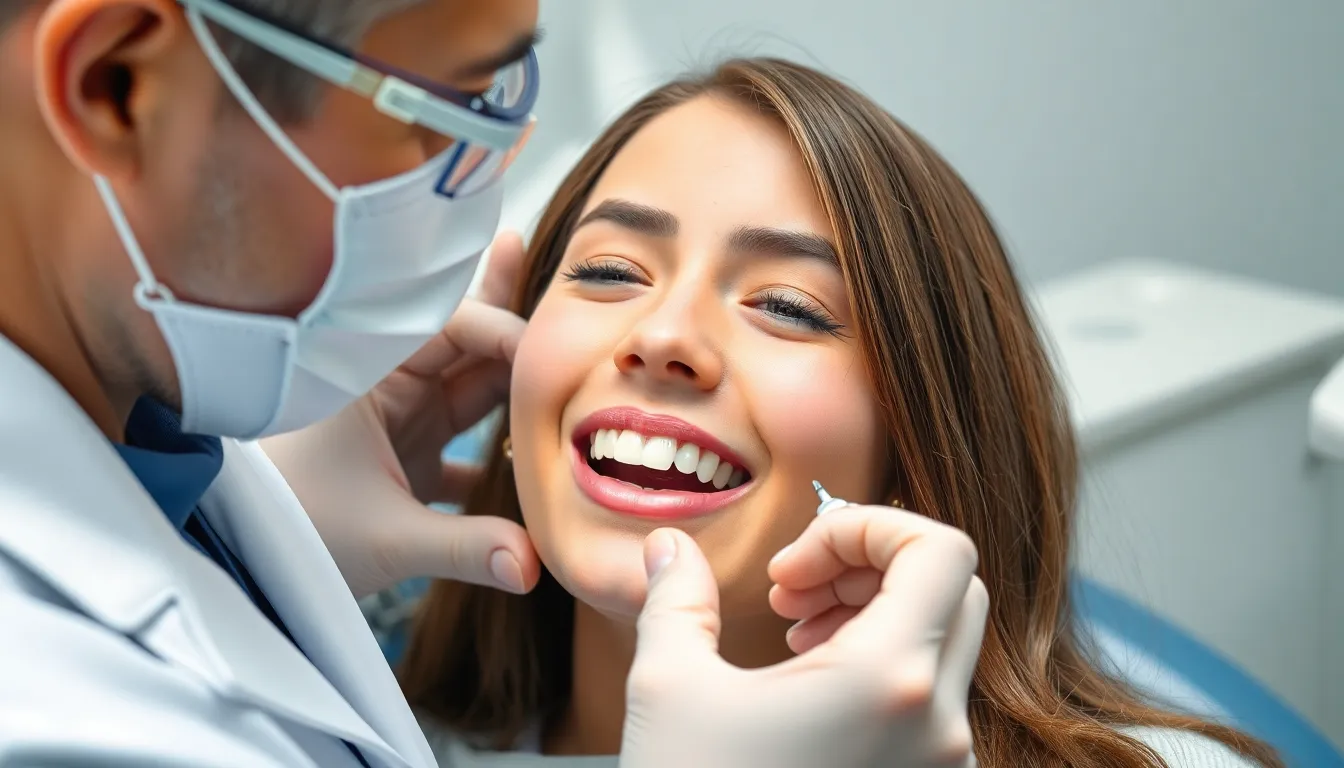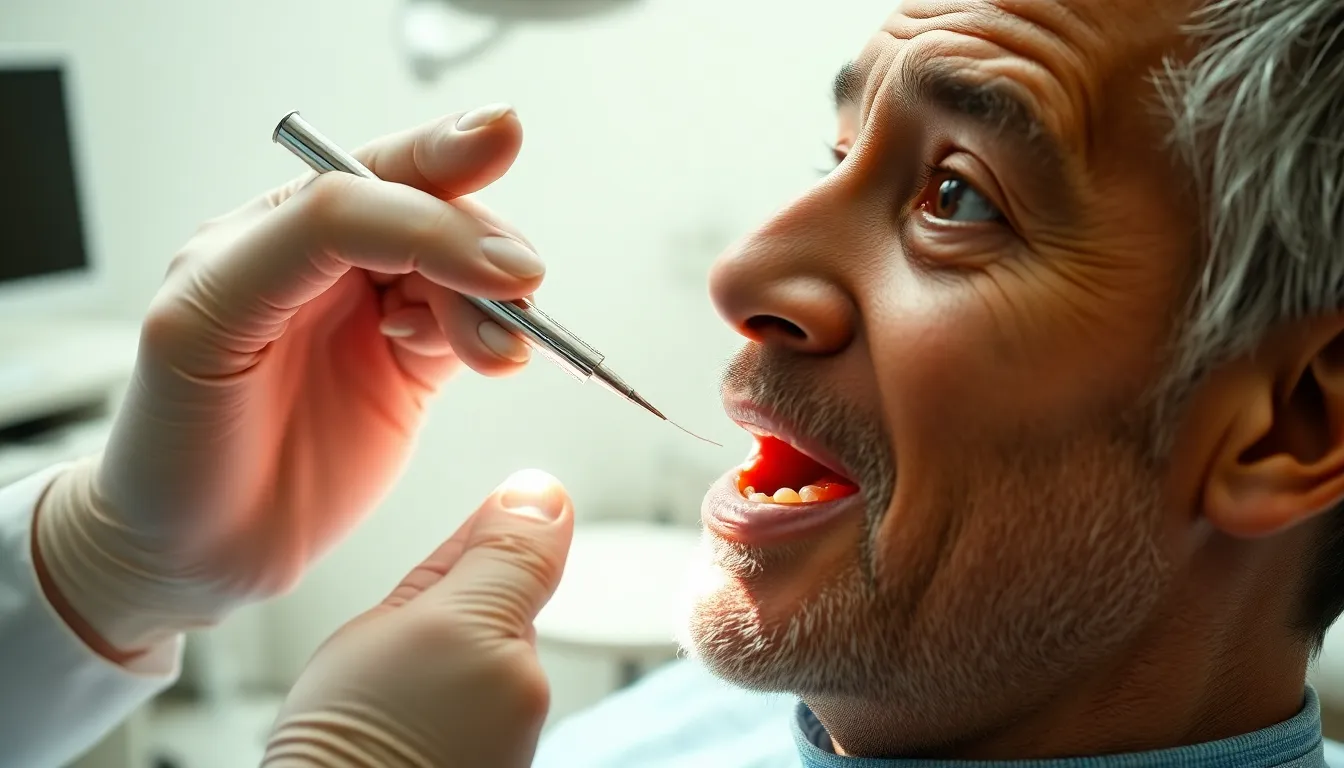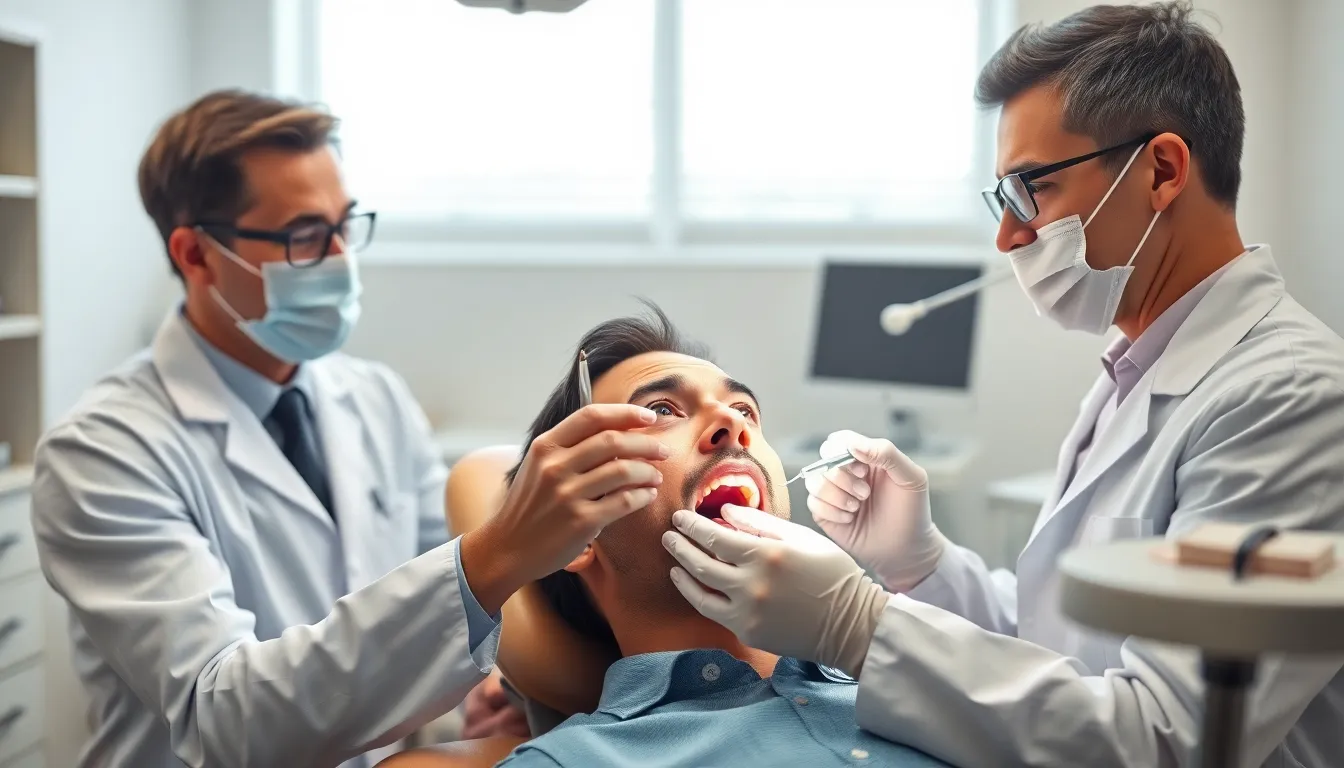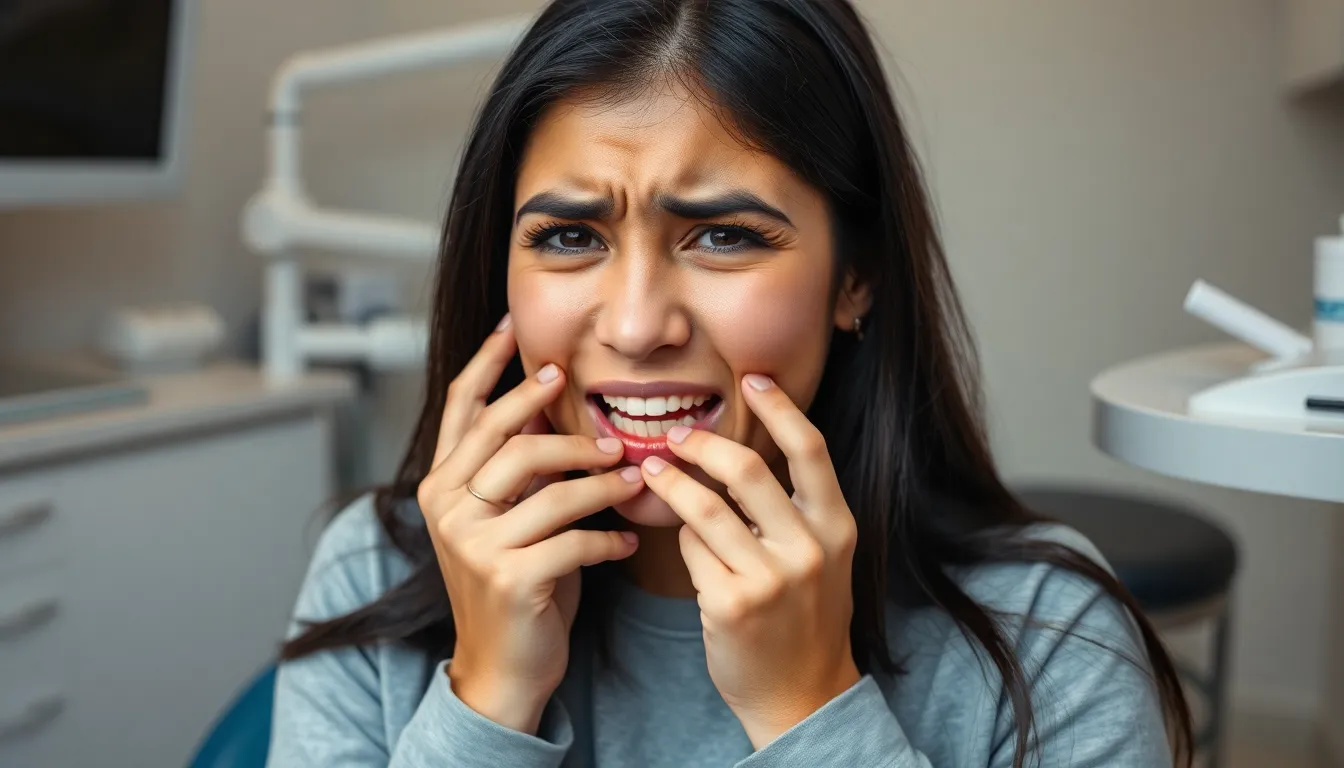Ever experienced gums that ache after eating? This uncomfortable sensation can turn your favorite meals into painful experiences, leaving you wondering what’s causing the discomfort and how to find relief.
When your gums hurt after enjoying food, it’s your body signaling that something needs attention. The pain might stem from various causes—ranging from minor sensitivity to more serious dental conditions. Understanding why your gums ache is the first step toward finding an effective solution and preventing future discomfort during mealtimes.
Understanding Why Your Gums Ache After Eating
Gum pain after eating stems from several common causes that affect millions of Americans daily. Food particles trapped between teeth trigger inflammation, while acidic or spicy foods directly irritate sensitive gum tissue. Hot beverages and foods can also cause thermal damage to your gums, leading to discomfort that lingers after meals.
“I had a patient who couldn’t enjoy her favorite citrus fruits anymore because her gums would throb for hours afterward,” shares Dr. Todd B. Harris. “After examination, we discovered early gingivitis was making her gums hypersensitive to acidic foods. With proper treatment, she’s back to enjoying oranges without pain.”
Common Causes of Post-Meal Gum Pain
Dental issues frequently manifest as gum pain when eating. Gingivitis, characterized by red, swollen gums that bleed easily, often causes discomfort during meals. Periodontitis, a more advanced form of gum disease, creates pockets between teeth and gums where food particles become trapped, causing sharp pain when chewing.
Cracked teeth or damaged dental restorations expose sensitive inner tooth structures, resulting in referred pain to surrounding gum tissue. Brushing too aggressively damages delicate gum tissue, creating raw areas that become painful when exposed to food. Tooth abscesses form pockets of infection that cause intense, throbbing pain in the gums surrounding affected teeth.
How Food Types Affect Gum Sensitivity
Different foods affect your gums in unique ways. Acidic foods like citrus fruits, tomatoes, and vinegar-based dressings erode gum tissue temporarily, causing immediate burning or stinging sensations. Extremely hot or cold items shock gum tissue, especially if you already have underlying sensitivity issues.
Crunchy foods with sharp edges, such as chips, crackers, or hard bread crusts, can physically irritate or cut gum tissue. Sugary foods feed harmful bacteria in your mouth, accelerating plaque formation and increasing inflammation in gum tissue. Spicy foods containing capsaicin directly irritate gum tissue, causing burning sensations that linger after meals.
When Gum Pain Signals Serious Dental Problems
Persistent gum pain after eating indicates potential serious conditions requiring prompt attention. Recurrent abscesses form when infection develops at the tooth root, creating painful pockets in gum tissue. Advanced periodontitis destroys supporting bone structure around teeth, causing intense pain during chewing.
Impacted wisdom teeth push against adjacent teeth and gum tissue, leading to inflammation and pain particularly noticeable during meals. Oral cancer sometimes manifests initially as persistent gum pain that doesn’t resolve, especially pain localized to one exact area. ANUG (Acute Necrotizing Ulcerative Gingivitis), though rare, causes severely painful gums with characteristic “punched-out” ulcerations between teeth.
Common Causes of Gum Pain During and After Meals

Gum pain during or after eating stems from various factors that irritate or damage delicate oral tissues. Understanding these causes helps identify the root of your discomfort and guides appropriate treatment approaches. Let’s explore the most common culprits behind those painful post-meal sensations.
Food Sensitivity and Temperature Triggers
Temperature extremes often trigger gum pain when your tissue is already sensitive or compromised. Hot coffee, ice cream, or frozen treats can cause sharp, immediate discomfort in vulnerable gums. Many patients experience this temperature-related pain as a warning sign of developing gum issues before other symptoms appear. Food allergies or sensitivities to exact ingredients may also lead to gum inflammation and tenderness that worsens after consuming certain foods. Dr. Harris notes, “I’ve treated many patients who experience localized gum pain after consuming particular foods, often indicating an underlying sensitivity that requires attention beyond simple dietary changes.”
Hard or Sharp Foods That Injure Gums
Crunchy, hard, or sharp-edged foods frequently cause direct physical trauma to gum tissue. Tortilla chips, hard candies, nuts, and crusty bread can create micro-cuts or abrasions on your gums that become painful during and after eating. Food particles trapped between teeth and gums commonly lead to inflammation and persistent throbbing pain until removed. Sarah, a dental hygienist patient of Dr. Harris, shared: “I always experienced intense gum pain after eating popcorn until I realized tiny hull fragments were getting lodged beneath my gumline, causing irritation that lasted for days.”
Acidic Foods and Their Effects
Acidic foods and beverages erode protective tissue layers and expose sensitive nerves in your gums. Citrus fruits, tomatoes, vinegar-based dressings, and carbonated drinks can significantly irritate gum tissue, especially if you already have gingivitis or other inflammatory conditions. The burning or stinging sensation typically intensifies during consumption and may persist for hours afterward. Regular exposure to these acidic substances gradually weakens gum integrity, making them more susceptible to damage from normal chewing and increasing pain sensitivity over time. Your diet composition plays a crucial role in either promoting gum health or contributing to chronic inflammation and discomfort.
Underlying Dental Conditions That Cause Gum Pain
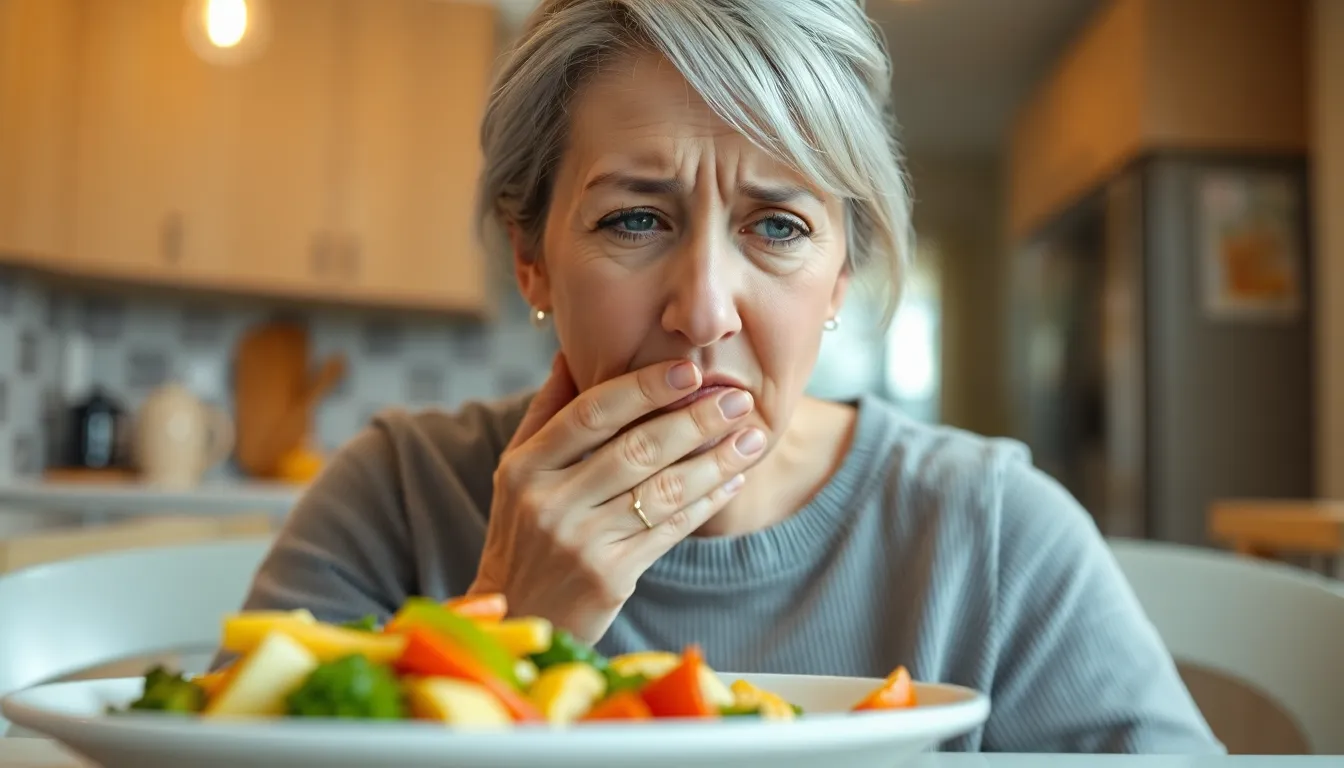
Gum pain after eating often stems from exact dental conditions that affect your oral health. These underlying issues can transform simple activities like eating into uncomfortable experiences. Let’s explore the most common dental conditions responsible for post-meal gum discomfort.
Gingivitis and Periodontal Disease
Gingivitis causes gum pain after eating due to bacterial buildup on teeth that leads to inflammation. Your gums become red, swollen, and may bleed when brushing or flossing, especially after meals when food particles can aggravate the condition. Left untreated, gingivitis progresses to periodontitis, a more severe form of gum disease that damages the supporting structures around your teeth and intensifies pain during chewing.
Dr. Todd B. Harris notes, “Many patients don’t realize their post-meal gum discomfort is actually early-stage gingivitis until important inflammation develops. Regular cleanings can prevent this progression and eliminate that characteristic tenderness after eating.”
Tooth Decay and Abscesses
Tooth decay creates inflammation in the surrounding gum tissue, resulting in soreness that flares up during meals. Food particles trapped in decayed areas increase pressure and irritation, making each bite painful. Dental abscesses—localized infections at the root of a tooth—cause throbbing gum pain that significantly worsens when you’re eating or applying pressure through chewing.
Sarah, a 42-year-old patient, experienced persistent gum pain after every meal for weeks. “I thought I just had sensitive gums until the pain became unbearable. My dentist discovered a small abscess beneath my molar that I couldn’t see but was causing intense pain whenever I ate anything.”
Dental Work and Orthodontic Appliances
Recent dental procedures such as fillings, crowns, or root canals commonly cause temporary gum soreness that heightens during meals. Poorly fitted dental appliances like crowns, dentures, or braces can trap food particles between them and your gums, creating painful inflammation. Mechanical trauma from aggressive brushing with hard bristles damages gum tissue, making it more susceptible to pain when exposed to food.
Orthodontic adjustments frequently lead to gum tenderness for 2-3 days afterward, making chewing uncomfortable until your mouth adapts to the new pressure. Patients with new dentures often experience similar discomfort until their gum tissues become accustomed to the appliance’s presence and pressure distribution during eating.
When Gum Pain Signals Something Serious
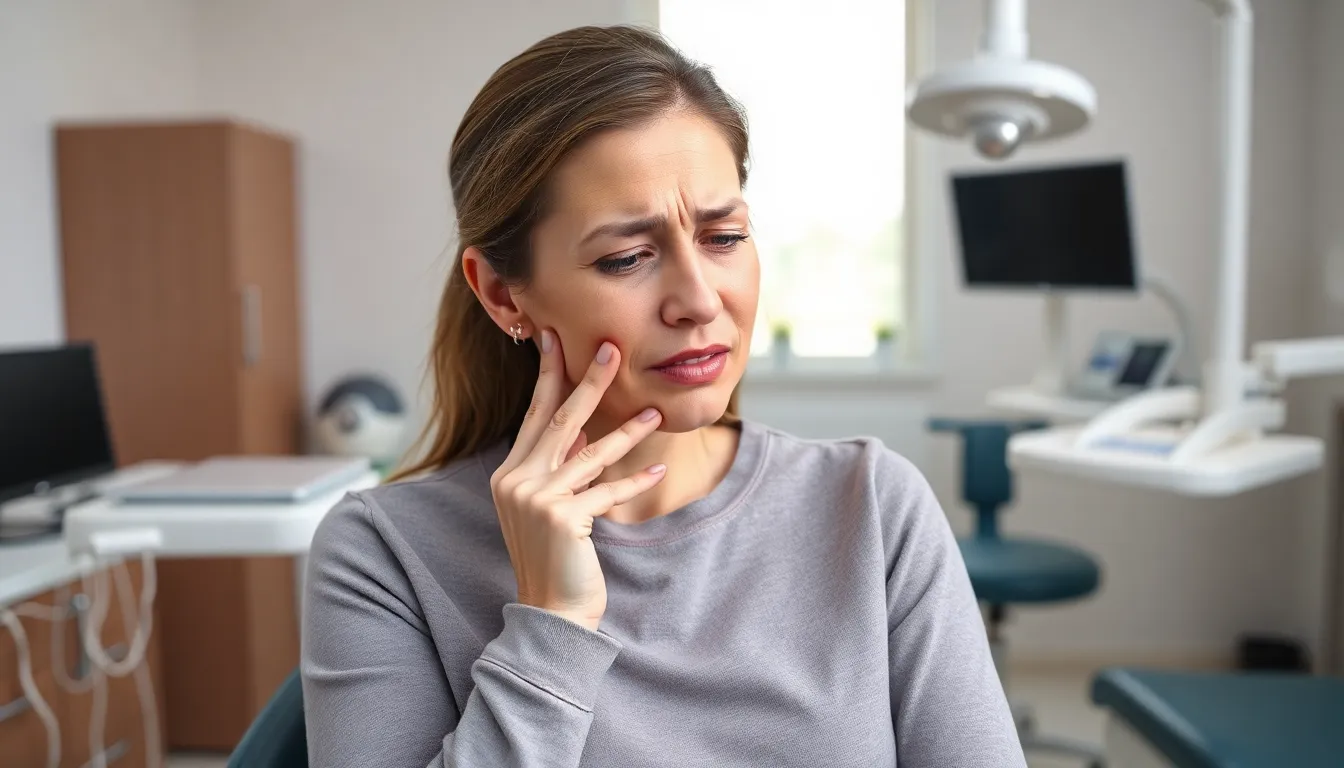
Gum pain after eating might indicate more than just temporary discomfort. Certain types of gum ache signal serious underlying conditions that require prompt dental attention, particularly when symptoms persist or worsen over time.
Signs You Should See a Dentist Immediately
Recognizing when gum pain requires urgent professional care can prevent complications and protect your oral health. Persistent swelling, redness, or bleeding gums after meals aren’t normal and often indicate active gum disease requiring treatment. Pain that intensifies or throbs in a exact area following eating suggests a possible infection or abscess developing below the gumline. The presence of pus, fever, or unusually bad breath points to an infection that needs immediate attention from a dental professional. Gum recession or sensitivity severe enough to interfere with eating or speaking indicates advanced periodontal issues. Any unusual lumps or ulcers in your gum tissue that don’t heal within two weeks should prompt an urgent dental visit, as these could signal more serious conditions.
“I recently saw a patient who ignored throbbing gum pain for weeks, thinking it would resolve on its own,” shares Dr. Todd B. Harris. “By the time she came in, what started as minor discomfort after meals had progressed to a substantial abscess requiring emergency treatment. Early intervention could have prevented this painful situation entirely.”
Potential Systemic Health Connections
Your gum health connects directly to your overall wellbeing in surprising ways. Advanced gum disease has established links to serious systemic conditions, including heart disease, diabetes, and stroke through shared inflammatory pathways. Chronic periodontal infections release inflammatory compounds into your bloodstream that can affect distant organs and potentially worsen existing health conditions. Persistent gum pain might reveal vitamin deficiencies, particularly of vitamins C and B complex, which are essential for gum tissue health and integrity. Tobacco users experience higher rates of gum disease and slower healing, making their gum pain after eating potentially more important. Food allergies sometimes manifest as localized gum inflammation and discomfort, especially after consuming trigger foods. Certain cancers, though rare, can present initially as unexplained gum pain or changes in gum tissue appearance and texture.
Regular dental check-ups remain crucial for catching these conditions early, particularly if you experience recurring gum pain after meals. The connection between oral health and systemic disease highlights why dentists often collaborate with primary care physicians when treating patients with persistent gum issues alongside other health concerns.
Home Remedies to Soothe Aching Gums

Soothing aching gums at home offers immediate relief while addressing the underlying causes of discomfort. These simple remedies can help manage pain and reduce inflammation between dental visits.
Saltwater Rinses and Cold Compresses
Saltwater rinses provide effective relief for inflamed gums by reducing bacteria and soothing irritated tissue. Simply dissolve a pinch of salt in warm water, swish it around your mouth for 30 seconds, then spit it out to experience the antiseptic benefits that help reduce swelling and alleviate pain. Cold compresses work by numbing the affected area and shrinking blood vessels when applied to your cheek or directly on gums for about 20 minutes. Wrap an ice cube in a thin cloth or use a cold pack against the outside of your mouth to reduce swelling, minimize bleeding, and temporarily dull the pain sensation.
“I’ve always recommended saltwater rinses to my patients with post-meal gum discomfort,” shares Dr. Todd B. Harris. “One patient came in with severely irritated gums after a spicy dinner, and after using saltwater rinses three times daily for two days, reported important improvement in both pain and swelling.”
Remember to avoid hot compresses if your gums are bleeding, as heat dilates blood vessels and can increase bleeding. Cold therapy proves more effective in most cases of acute gum pain after eating.
Dietary Adjustments That Help
Making strategic changes to your eating habits can dramatically reduce gum pain and promote healing. Avoid foods that irritate sensitive gums, including very hot dishes, spicy cuisine, and acidic items like citrus fruits or tomato-based sauces. Incorporate foods rich in vitamin C (such as bell peppers and strawberries) and vitamin K (like kale and spinach) to support gum health and accelerate healing processes.
Limiting sugary and starchy foods proves particularly important since these items fuel bacterial growth in your mouth, leading to increased inflammation and discomfort. Bacteria feed on sugar residues, producing acids that irritate gum tissue and worsen conditions like gingivitis.
Gentle brushing techniques complement these dietary changes—use a soft-bristled toothbrush and careful flossing to remove food particles without further irritating tender gums. Persistent pain or bleeding after implementing these remedies warrants a professional dental evaluation to rule out more serious conditions.
Prevention Strategies for Healthier Gums

Preventing gum pain after eating starts with maintaining healthy gums through consistent care routines. These preventive measures not only address existing discomfort but also build a foundation for long-term oral health.
Proper Oral Hygiene Techniques
Brushing your teeth twice daily with a soft-bristle toothbrush and fluoride toothpaste creates the first line of defense against gum problems. Position your brush at a 45-degree angle to your gums and use short, gentle strokes to avoid damaging sensitive gum tissue. Regular toothbrush replacement every 3-4 months ensures effective cleaning without harsh bristles that might irritate your gums.
Daily flossing removes plaque and food particles from between teeth where toothbrushes can’t reach. These hard-to-access areas often become breeding grounds for bacteria that cause gum inflammation and pain after meals. Adding a therapeutic mouthwash to your routine reduces bacteria that contribute to gum disease and bad breath, creating a more comprehensive oral hygiene approach.
Don’t forget to clean your tongue while brushing—this simple step removes bacteria that may contribute to oral infections and gum problems. Many patients report important improvement in gum sensitivity after incorporating tongue cleaning into their daily routine.
Regular Dental Check-ups
Professional dental examinations detect early signs of gum disease before they progress to painful conditions. During these appointments, dentists remove tartar buildup that can’t be eliminated through regular brushing or flossing at home. These cleanings effectively reverse early gingivitis and maintain gum health by addressing problems before they cause important discomfort.
Dr. Todd B. Harris notes, “Many patients come to me with gum pain that could have been prevented with regular check-ups. One patient ignored mild discomfort for months until eating became extremely painful—what started as simple gingivitis had progressed to more serious gum disease requiring extensive treatment. Early intervention through regular appointments would have saved them considerable pain and expense.”
Scheduling dental visits every six months creates opportunities for professional assessment of your gum health and personalized advice on improving your oral hygiene techniques. Dental professionals can identify problematic areas you might miss during home care and provide targeted recommendations for preventing future gum pain after eating.
Additional prevention strategies include quitting smoking, which significantly impairs immune response and increases susceptibility to gum infections. Smokers experience delayed healing and face a much higher risk of developing gum disease that can cause pain during and after meals. Maintaining good nutrition also supports overall gum health, creating resilience against irritation and inflammation.
Conclusion
Gum pain after eating is your body’s way of signaling potential issues that shouldn’t be ignored. While temporary discomfort might result from food choices or minor irritation implementing proper oral hygiene practices and home remedies can provide relief in many cases.
Remember that healthy gums are fundamental to your overall wellbeing with connections to serious conditions like heart disease and diabetes. Be proactive by maintaining gentle brushing habits avoiding trigger foods and scheduling regular dental check-ups.
If you experience persistent pain swelling bleeding or other concerning symptoms don’t hesitate to seek professional dental care. Taking action now can prevent minor irritation from developing into more serious conditions and help you enjoy meals without discomfort.
Frequently Asked Questions
Why do my gums hurt after eating?
Gum pain after eating can result from several factors including trapped food particles, irritation from acidic or spicy foods, thermal damage from hot beverages, or underlying dental conditions like gingivitis and periodontitis. This pain is your body’s signal that something might be wrong with your oral health, ranging from minor sensitivity to serious dental issues.
Can certain foods trigger gum pain?
Yes, specific foods can trigger gum pain. Acidic foods (citrus, tomatoes) can erode protective tissue. Temperature extremes from hot coffee or ice cream can cause sharp discomfort. Hard or crunchy foods may create micro-cuts in sensitive gums. Sugary foods feed bacteria that contribute to gum inflammation. If you notice pain after specific foods, consider eliminating them temporarily.
What are signs that my gum pain requires immediate dental attention?
Seek immediate dental care if you experience persistent swelling, redness, or bleeding gums that don’t improve. Throbbing pain indicates possible infection. Other warning signs include pus around teeth or gums, fever accompanying gum pain, bad breath that doesn’t resolve with brushing, or pain lasting longer than 2-3 days despite home remedies.
How does gum disease cause pain after eating?
Gum disease like gingivitis causes inflammation that makes gums sensitive during eating. In early stages, you might notice redness, swelling and bleeding when chewing. As it progresses to periodontitis, bacteria attack deeper tissues, creating pockets between teeth and gums. These exposed areas become extremely sensitive to temperature changes and food contact, causing sharp pain during meals.
What home remedies can help relieve gum pain?
Saltwater rinses (1/2 teaspoon salt in 8oz warm water) reduce bacteria and inflammation. Cold compresses applied to the outside of your mouth can numb pain and reduce swelling. Avoid irritating foods like acidic, spicy, or extremely hot items. Try gentle brushing with a soft-bristled toothbrush. Over-the-counter pain relievers can provide temporary relief.
How can I prevent gum pain after eating?
Maintain proper oral hygiene by brushing twice daily with a soft-bristle toothbrush and fluoride toothpaste. Floss daily to remove food particles between teeth. Use therapeutic mouthwash to reduce bacteria. Schedule regular dental checkups every six months for professional cleanings and early problem detection. Quit smoking and maintain a balanced diet rich in vitamins C and D.
Can dental work cause gum pain when eating?
Yes, recent dental procedures like fillings, crowns, extractions, or deep cleanings can cause temporary gum sensitivity when eating. Orthodontic appliances like braces or aligners may also create pressure and irritation. This discomfort typically subsides within a few days to a week. If pain persists or worsens, contact your dentist as it might indicate complications.
Is gum pain linked to any serious health conditions?
Yes, persistent gum problems can indicate systemic health issues. Research has linked advanced gum disease to heart disease, diabetes, respiratory infections, and pregnancy complications. The inflammation associated with gum disease may contribute to inflammation throughout the body. Treating gum problems not only relieves pain but may help prevent or manage these serious health conditions.


